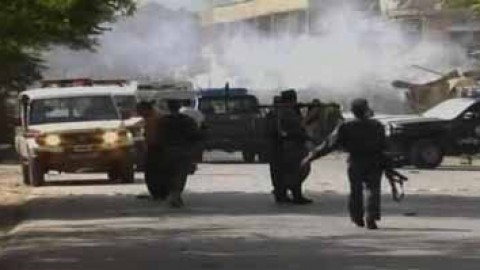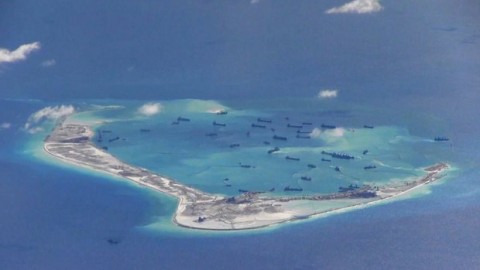Nearly 80 people have been killed and another 600 are gravely injured.
The biggest earthquake to strike the Latin American country of Ecuador since 1979, Saturday’s earthquake of magnitude 7.8 according to the Richter Scale has left almost 80 people dead and has severely wounded another 600. It reportedly originated close to the north Ecuador town of Muisne at 18:58 local time and from there on, large tremors were felt in towns and cities in the far south of the country as well. Infrastructural damage across the country has been wide, with a bridge collapsing in Guayaquil, a town 300 km south of Muisne.
President Raffael Correa of Ecuador, on his way back from a diplomatic trip to Italy has declared a state of emergency in the state, saying, “This is a very painful test. I ask the country to be calm and united… Let’s be strong; we will overcome this. Roads and hospitals can be rebuilt; you cannot recover lost lives. That’s what hurts the most.”

Even as rescue operations began with fervour across the state, the Vice-President of Ecuador, Jorge Glas, warned that there may be more casualties than reported so far because efforts are unable to reach certain remote and/or blocked areas. Yet, all public officials unanimously called for calm. Said Mayor Gabriel Alcivar of Pedernale, a town not too far from the epicenter, “We’re trying to do the most we can but there’s almost nothing we can do.”
Witnesses of the earthquake talked about mass-flattening of buildings, collapsing trees and cracked roads.Commented Carla Peralto, a citizen of Boyaca, another badly affected region, “I never felt something like that in my life. It was so strong. I was feeling very, very scared… I was thinking ‘God, please stop that because maybe I die today’.” Meanwhile, in parts closer to the epicenter, like Manta, a witness, Ramon Solorzano, stated,” “Most people are out in the streets with backpacks on, heading for higher ground. The streets are cracked. The power is out and phones are down.”

At the same time, researchers determined the depth of the earthquake to be at a reasonably shallow level of 19.2 km below the ground, only 27 km away from Muisne, but fortunately, located in a low-population area, curbing the damage on the human front. In addition to this massive tremblor, much of Ecuador experienced high-intensity aftershocks, including one reaching a magnitude of 5.4. At first, the possibility of a resultant tsunami was high, with officials expecting tsunami waves of height 0.3 to metre above the tide to hit several Ecuador coasts; but the Pacific Tsunami Warning Centre declared on Sunday afternoon that the risk was mostly gone and remaining indicators should be examined by the local meteorological departments.
In several of the affected areas, people have found refuge in open parks and public grounds, having noticed that this earthquake was to stay. Ecuador’s Latin neighbours of Peru, Columbia and Venezuela have offered their assistance to the shaken state. In fact, some part of Columbia also felt the tremors, and authorities were forced to evacuate patients in a hospital.

Ecuador, a country located on the deadly ‘Ring of Fire’, an arc of high seismic activity that exists around the Pacific basin, is rather prone to earthquakes and has seen massive earthquakes of an average magnitude of 7.0 since the 1900s, especially withing 250 km of its latest tremor site. It has seen a substantial amount of loss, be it life or infrastructure. This has consistently been the result of the Narca plate being gradually pulled beneath the South American tectonic plate, and at this juncture lies Ecuador. Although a phenomenon that has been instrumental in the creation of natural wonders like the Andes, researchers have decided that the completion of this activity could be highly damaging, killing hundreds of people.
Source (Story and images): BBC and Daily Mail UK
Tags: Earthquake in Muisne Ecuador earthquake Muisne Ecuador







